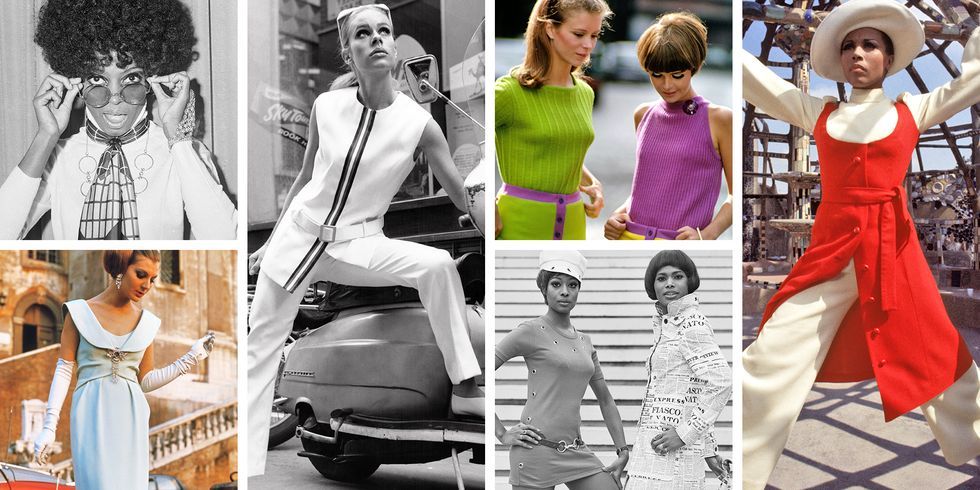
Image Source: FreeImages
Fashion is not just about clothing; it is a reflection of the times, a language that speaks volumes about society and culture. Throughout history, fashion trends have evolved, morphing from one era to another, leaving an indelible mark on the world. Join me on a stylish journey through time as we explore the fascinating history of fashion trends.
The evolution of fashion trends from ancient times to the 19th century
Fashion has been a part of human existence since time immemorial. From ancient civilizations like Egypt and Rome, where elaborate clothing denoted social status, to the medieval period, where sumptuous fabrics and intricate designs defined fashion, the evolution of fashion trends has been a captivating tale.
In the Renaissance era, fashion became synonymous with power and wealth. The luxurious fabrics, opulent adornments, and extravagant silhouettes were a testament to the status of the wearer. As we move closer to the 19th century, fashion trends became more accessible to the masses with the rise of the industrial revolution and the emergence of ready-to-wear clothing.
The roaring twenties: A revolution in fashion trends
The 1920s, also known as the “roaring twenties,” witnessed a seismic shift in fashion trends. The restrictive corsets of the past were replaced with loose-fitting flapper dresses that embodied the spirit of liberation and rebellion. Women embraced shorter hemlines, dropped waistlines, and bold accessories like feathered headbands and long strands of pearls. The fashion of the roaring twenties was a reflection of the changing societal norms and the newfound freedom experienced by women.

The swinging sixties: An era of bold and experimental fashion
The 1960s was a decade of cultural revolution, and fashion mirrored the changing times. The swinging sixties brought a burst of vibrant colors, psychedelic prints, and bold patterns. Mini skirts became a symbol of female empowerment, challenging traditional notions of modesty. The Beatles and the British Invasion influenced fashion trends, with men embracing tailored suits and mod fashion. The swinging sixties set the stage for a decade of experimentation and self-expression through clothing.

The disco era: Glitz, glamour, and excess in fashion trends
The disco era of the 1970s was a celebration of glitz, glamour, and excess. Inspired by the music and dance scene, fashion trends took a turn towards sequins, glitter, and metallic fabrics. Women embraced the disco diva look with high-waisted flared pants, halter tops, and platform shoes. Men sported wide collars, bell-bottom pants, and vibrant colors. The disco era was all about making a bold statement and indulging in the hedonistic pleasures of the time.
The grunge movement: A rebellion against mainstream fashion
In the 1990s, fashion took a rebellious turn with the grunge movement. Inspired by the alternative music scene, grunge fashion rejected the polished aesthetics of previous decades. Flannel shirts, ripped jeans, combat boots, and oversized sweaters became the uniform for the disenchanted youth. Grunge fashion was a subversion of mainstream trends, a rejection of consumerism, and a statement of individuality.

The rise of streetwear: How hip-hop and skate culture influenced fashion trends
The turn of the millennium witnessed the rise of streetwear, a fashion movement heavily influenced by hip-hop and skate culture. Baggy jeans, hoodies, sneakers, and graphic tees became the epitome of cool. Streetwear blurred the boundaries between high fashion and street style, breaking down the traditional hierarchy of fashion. Brands like Supreme, Off-White, and Adidas collaborated with artists and musicians, further cementing the influence of streetwear in mainstream fashion.
The digital age: The impact of technology on fashion trends
As we entered the digital age, fashion trends began to evolve at an unprecedented pace. The rise of social media platforms like Instagram turned fashion influencers into overnight sensations, dictating trends and shaping consumer behavior. Online shopping became the norm, with fast fashion brands delivering new styles at lightning speed. Technology also played a crucial role in sustainable fashion, with innovations in fabric production and recycling.
The present and future of fashion trends
In the present day, fashion trends have become more inclusive and diverse. Body positivity movements have challenged traditional beauty standards, leading to a wider representation of different body types in fashion. Sustainable and ethical fashion is gaining momentum, with consumers demanding transparency and accountability from brands. The future of fashion trends lies in embracing innovation, technology, and sustainability to create a more inclusive and responsible industry.
Conclusion: The enduring influence of fashion trends throughout history
Fashion trends have always been a reflection of the times, capturing the spirit and essence of each era. From ancient civilizations to the digital age, fashion has evolved, adapted, and transformed, leaving an indelible mark on society. The history of fashion trends is a testament to the power of self-expression, creativity, and the ever-changing nature of human culture. As we embark on our own fashion journeys, let us embrace the rich tapestry of history and celebrate the enduring influence of fashion trends.
